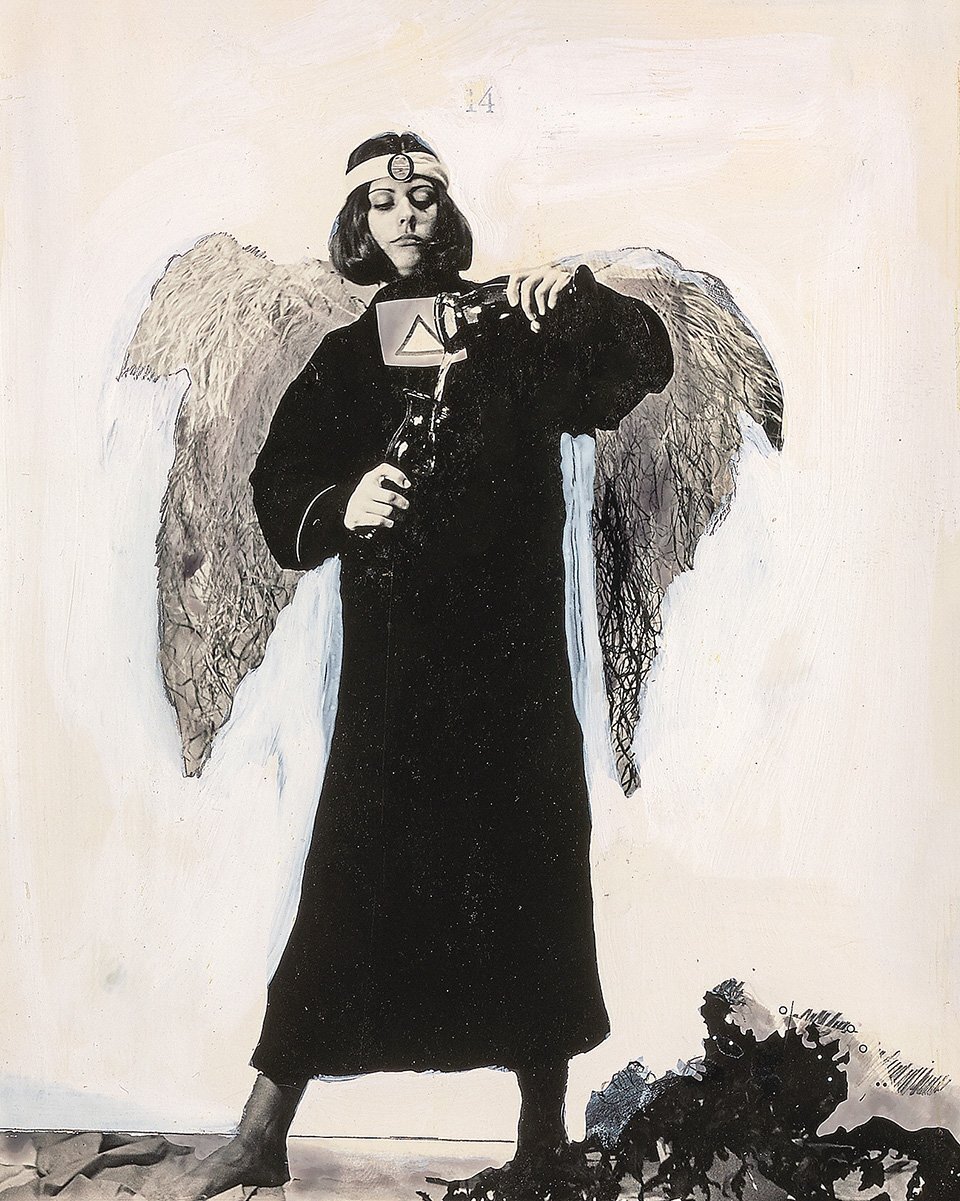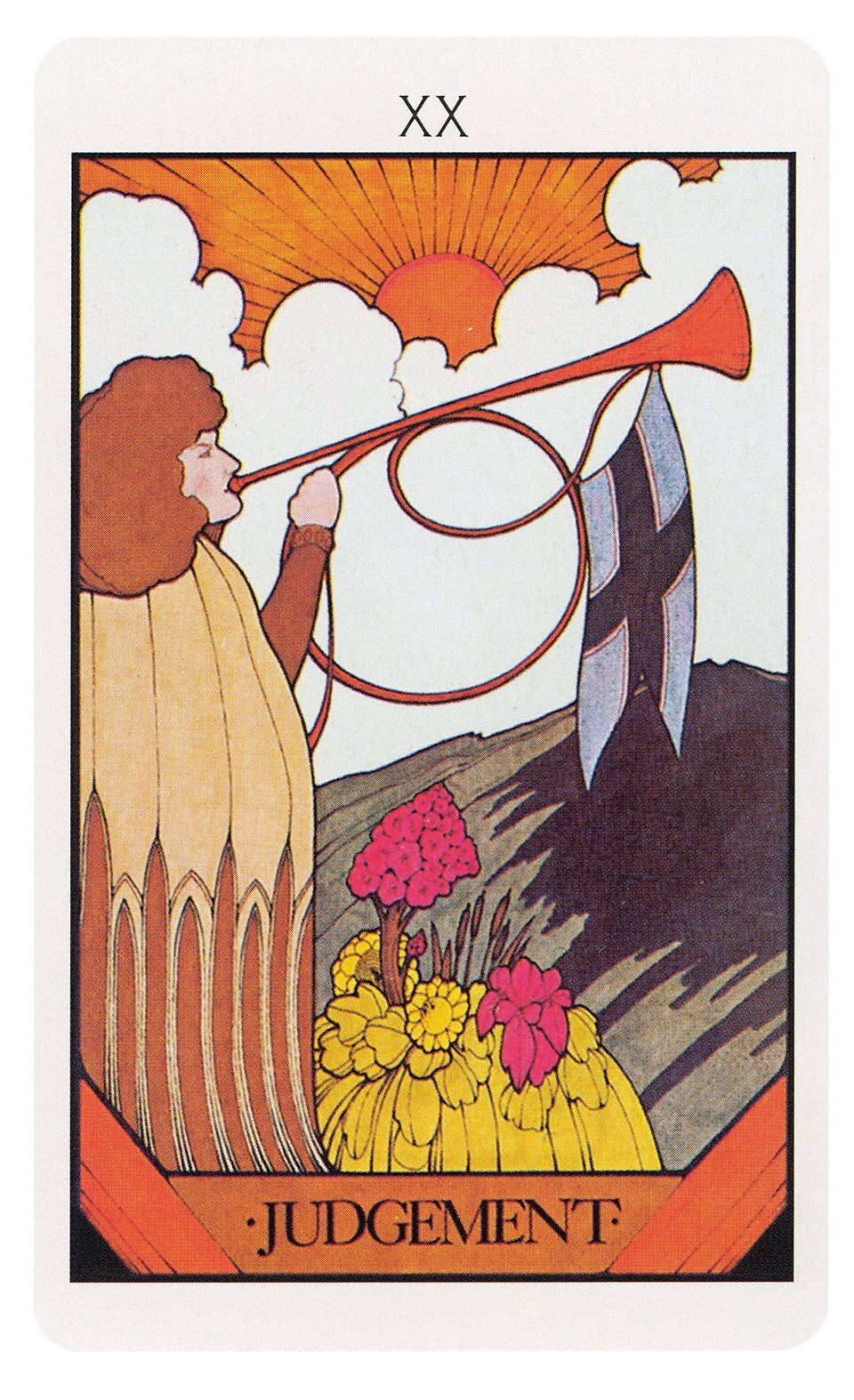Jessica Hundley is a writer, director, and the editor of Tarot, the first volume in TASCHEN’s Library of Esoterica series. This visual compendium includes more than 500 cards and works of original art from around the world in the ultimate exploration of a centuries-old art form, and excerpts from essays from thinkers such as Éliphas Lévi, Carl Jung, and Joseph Campbell. It’s a beautiful book and resource and we were thrilled to speak with Jessica, via email, about the making of this book, and her own practice.
Elizabeth Kim What inspired you to compile a book on tarot? What did you want this book to be?
Jessica Hundley I’ve always loved Tarot and have been collecting various decks since I was 12 or 13. The art, the iconography, the way the symbology of Tarot immediately taps into our own knowing and intuition, all of this was the reason I wanted to create this book. We’re living in a moment where we need tools, meditative, healing practices that lead us into deeper understanding of ourselves. Tarot is one of those tools. I wanted to create a beautiful, seductive and inclusive introduction that would welcome all – and felt the best way to do that would be to focus on the art, the history and an easy to understand overview of each card. I wanted to focus less on the dogma and more on the artistry, to draw back the veil and bring more people in, show them that this is a practice that can be helpful to everyone - creatively and emotionally.
EK Tarot hasn’t always been regarded as an art form by mainstream culture. Do you think this is changing?
JH Absolutely. So many incredible contemporary creators are turning to Tarot for inspiration. Although artists have been working with Tarot symbology since the Middle Ages. And in the 20th century, fine artists from the Transcendental and Surrealist schools were deeply inspired by Tarot—Dali, Remedios Varo, Leonora Carrington and later, in the 1960s and 1970s Pop Artist as well, such as The Fool Collective and Niki de Saint Phalle. De Saint Phalle’s Tarot Garden in Italy is arguably one of the greatest and most awe-inspiring works of Tarot art in the world.
Strength, The Black Power Tarot, 2015, by Michael Eaton and AA King Khan
EK Which are your three favourite cards or decks from the book? Can you talk us through your choices?
JH It is impossible to pick favorites! I love them each for various reasons. And I’m drawn to different decks depending on the day. Every card we included is important in its own way and will speak to someone out there. My hope is that people will go through the book and find cards they resonate with, then support the artists that are self-publishing their own decks.
EK Do you read Tarot yourself? If so, what's your card-reading practice like?
JH Yes. I read for myself. For others, I don’t read in the traditional manner. Instead I do workshops where I guide people in using tarot as a creative tool, reading the cards to encourage inspiration or overcome creative blocks. For myself, I usually do a one card reading every day, asking a simple questions, like “what should I focus on today?” and the cards always offer something poetic and insightful and relevant. I use Tarot regularly as a tool to tap in and tune in to my own intuition.
EK The archetypes have throughout history largely remained the same though the imagery and symbols change. Why has tarot such an enduring appeal, across time and different cultures?
JH Exactly because of what you just stated! We recognise ourselves in the cards. Archetypes remain, because we are all human with the same desires and fears and needs. There is something beautiful and reassuring to know that we share the same stories as our ancestors, that we are all on the same journey.
EK It’s heartening to see a major publisher of art books focusing on the occult and the esoteric. Some of your other books have delved into this territory, for example The Taschen Book of Symbols. Is the demand increasing for books on this subject? If so, why do you think that is?
JH I think people are seeking ways to find themselves, to find connection and spirituality and communities outside of traditional, normative culture. Tarot and astrology and witchcraft, all of these are not just practices, they are ways of knowing, of learning more about yourself and your world.
EK This is the first in Taschen's Library of Esoterica series, which sounds exciting. Can you tell us a little more about that?
JH I’ll leave you with an excerpt of our “For The Seekers” statement that will be included in the final pages of each volume of the series.
“FOR THE SEEKERS:
The intent of this series is to offer an inclusive, introductory overviews to these ancient rituals and to explore their complex symbolism objectively, rather than dogmatically. In doing so, the aspiration is to draw back the veil and to reveal a deeper appreciation of these valuable tools of the psyche. Esoteric knowledge offers powerful methods for self-exploration and meditation. These magical practices have developed over centuries in order to allow for a further under-standing of the inner world.
The goal of this series is to present condensed summaries of these ancient systems and from there, encourage readers to further explore the rituals, ceremonies, and sacred philosophies of various global cultures. The task is to inspire readers to seek out knowledge, to study the teachings of scholars past and present, whom have dedicated themselves to the development and preservation of these ancient arts.
The hope is that The Library of Esoterica emboldens readers to begin their own journey down into the dark the halls of the arcane, to pull the dusty tomes from the shelves, to take the timeworn cards from the satchel and spread them across the silks, to look up to the sky and read meaning in the movement of the stars.“
The Empress: Sebastian Haines, "The Tarot of the Golden Serpent," 2013 (detail)
Temperance, Mountain Dream Tarot, 1975, by Bea Nettles
Judgement: David Palladini, "Aquarian Tarot," 1970
© U.S. Games Systems
Pamela Colman Smith with puppets she created, featured in the October 1912 issue of "The Craftsman Illustrated"
The Hanged One: artist unknown, "Estensi Tarot," 15th century
© Bibliothèque nationale de France
The Tower, Neuzeit Tarot, 1983, by Walter Wegmuller
All images courtesy TASCHEN - copyrights remain with the respective artists.








